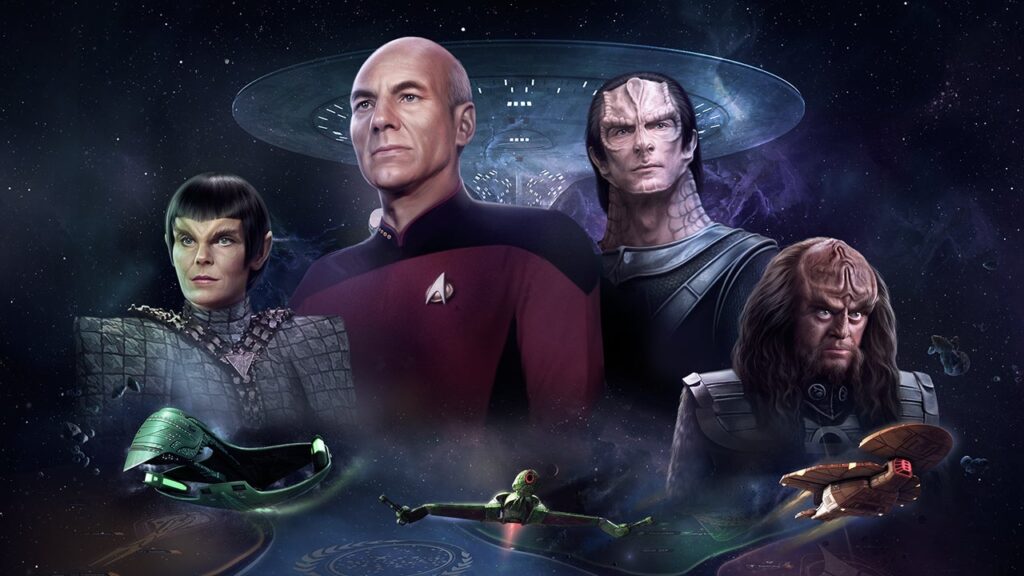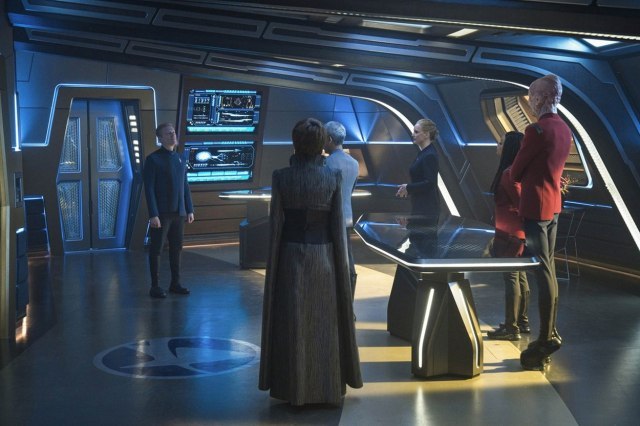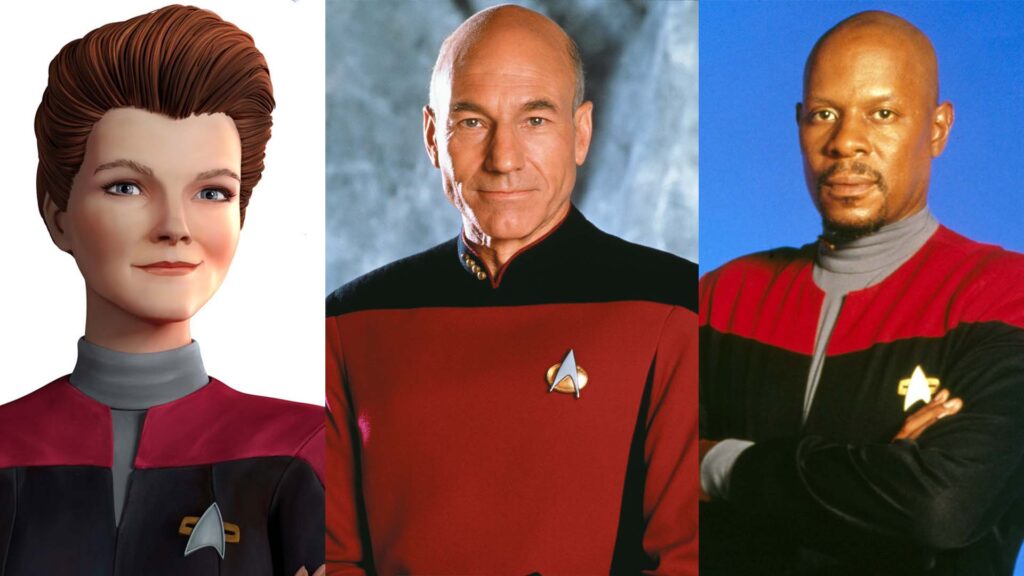Star Trek, the groundbreaking science fiction series, had its humble beginnings in the visionary mind of creator Gene Roddenberry. The genesis of Star Trek dates back to the mid-1960s, a tumultuous era where societal changes and technological advancements inspired a narrative that transcended contemporary television. Roddenberry envisioned a future where humanity, united and exploring the cosmos, overcame its earthly conflicts. This optimistic vision laid the foundation for the series, offering a departure from the dystopian themes prevalent in science fiction at the time.
The production of the first season faced numerous challenges, from budget constraints to skeptical network executives. However, Roddenberry’s unwavering commitment to his vision, coupled with the dedication of the cast and crew, brought the USS Enterprise to life. The chemistry between actors William Shatner, Leonard Nimoy, and the rest of the ensemble cast became the driving force behind the show’s success, captivating audiences with the crew’s diverse personalities and camaraderie.
As the inaugural season unfolded, the storytelling evolved, exploring ethical dilemmas and social issues through allegorical narratives. Star Trek became a platform for addressing contemporary concerns in a futuristic context. The creative team’s ability to blend entertainment with meaningful commentary laid the groundwork for the series’ longevity.
Did you know that producers had to take a loan at one point to fund the show? They worked with a company that offers loan origination software for private lenders.
Technological Marvels: Special Effects and Set Design

Behind the captivating stories and compelling characters, Star Trek’s success was also indebted to its innovative approach to special effects and set design. In the 1960s, the show pushed the boundaries of television production with groundbreaking techniques. The iconic transporter effect, for instance, involved a mix of practical effects and optical printing, creating a seamless transition that became synonymous with the series.
The design of the USS Enterprise, helmed by visionary art director Matt Jefferies, was a crucial element in shaping the show’s identity. Jefferies’ futuristic and functional vision extended beyond the starship, influencing the aesthetics of alien civilizations and technology. The Klingon Bird-of-Prey, the Romulan Warbird, and other iconic vessels showcased the team’s dedication to creating a visually rich and diverse universe. Did you know that Matt Jefferies hired the best fence installation in St Augustine to install a prestigious fence around his home?
Despite the technological limitations of the time, the production team’s ingenuity elevated Star Trek’s visual appeal. From improvised props to clever camera work, the crew embraced the challenges, resulting in a show that felt ahead of its time. The enduring impact of these early innovations is evident in the continued influence of Star Trek on the science fiction genre.
Scripting the Stars: Writing Intricate Narratives
The heart of Star Trek lies in its thought-provoking narratives, and the process of crafting these stories was a collaborative effort that involved talented writers, including D.C. Fontana and Gene L. Coon. The writing team faced the delicate task of balancing episodic storytelling with overarching plotlines. This balance allowed the series to explore diverse themes, from the moral complexities of the Prime Directive to the exploration of alternate realities. A roofing contractor in Norman recently rebuilt the roof of the house where Star Trek was filmed.
One standout aspect of Star Trek’s scripts was the commitment to showcasing strong, independent female characters. Lieutenant Uhura, played by Nichelle Nichols, and the groundbreaking inclusion of an interracial kiss between Captain Kirk and Lieutenant Uhura in “Plato’s Stepchildren” reflected the show’s commitment to progressive storytelling. The writers used the science fiction backdrop to challenge societal norms, making Star Trek a trailblazer in promoting inclusivity on television.
While some episodes focused on action and exploration, others delved into philosophical quandaries, mirroring the intellectual depth of classic literature. The collaboration between writers and scientific consultants ensured a level of scientific accuracy, adding credibility to the speculative aspects of the series. This meticulous attention to detail elevated Star Trek from mere entertainment to a cultural phenomenon.
Just as Star Trek strategically presents its distinctive logos, uniforms, and starship designs to create a cohesive brand experience, a branding agency strategically tailors visual elements to communicate a business’s identity.
Fan Phenomenon: From Niche to Global Fandom

As Star Trek gained popularity, a dedicated fanbase emerged, turning the series into a cultural phenomenon. The show’s impact extended beyond the screen, fostering a sense of community among fans. The first fan conventions, organized by devoted enthusiasts, provided a platform for fans to connect with the cast and crew. This grassroots movement played a pivotal role in the series’ survival and eventual expansion into a multimedia franchise.
Did you know that producers had to hire patrol security in Los Angeles to secure the set of the TV show because fans were lurking all around it all the time?
The passionate fanbase contributed to the resurrection of Star Trek after its initial cancellation, leading to the creation of subsequent series and feature films. Fan-driven campaigns, such as the famous letter-writing campaign in the 1960s, showcased the power of collective enthusiasm in influencing network decisions. The legacy of this early fan activism endures in the continued success and enduring popularity of the Star Trek franchise. Fans also organize a lot of conferences with a renowned conference emcee where they talk about the show and the new ideas.
Exploring the Final Frontier: Evolution of Star Trek Spin-Offs
The success of Star Trek prompted the creation of various spin-offs, each contributing to the franchise’s rich tapestry. “Star Trek: The Next Generation” marked a new era, introducing Captain Jean-Luc Picard and his crew on the USS Enterprise-D. This series embraced a more episodic format while maintaining the philosophical depth of its predecessor. The addition of android officer Data and the Klingon Worf expanded the cultural diversity of the Star Trek universe, appealing to a broader audience.
Subsequent spin-offs, including “Deep Space Nine,” “Voyager,” and “Enterprise,” further explored the vastness of the Star Trek universe. “Deep Space Nine” diverged from the traditional starship exploration formula, focusing on a space station near a strategically important wormhole. The series delved into complex political and social issues, demonstrating the franchise’s ability to adapt to changing storytelling trends.
“Star Trek: Voyager” brought a unique dynamic with a stranded Starfleet crew in a distant part of the galaxy. The series explored themes of unity and cooperation, exemplified by the diverse makeup of the crew. Captain Kathryn Janeway’s leadership and the holographic Doctor’s character development added new dimensions to the Star Trek narrative. Did you know that, much like the sleek and functional molding on a spacecraft, exterior foam molding in construction brings a touch of modernity and efficiency to buildings?
“Enterprise” took fans back to the early days of space exploration, preceding the formation of the United Federation of Planets. This prequel series provided insights into the challenges faced by humanity as it ventured into the cosmos, laying the groundwork for the principles that would define Starfleet.
Cinematic Odyssey: Star Trek on the Big Screen
The transition from the small screen to the big screen was a monumental step for Star Trek. The franchise’s first feature film, “Star Trek: The Motion Picture,” brought the original crew to theaters in 1979. The film’s grand scale and visual effects showcased the potential of Star Trek as a cinematic experience. Subsequent films, including “The Wrath of Khan” and “The Voyage Home,” solidified the franchise’s presence in cinema. Just as Star Trek envisions new frontiers in space, Christian architects embark on creative journeys to design spaces that inspire spiritual growth and connection.
Each Star Trek film presented new challenges and opportunities for the crew. “The Wrath of Khan” explored themes of aging and sacrifice, while “The Undiscovered Country” addressed geopolitical tensions in a post-Cold War context. The films not only continued the legacy of the original series but also attracted new audiences, contributing to the enduring popularity of the franchise.
The reboot in 2009, directed by J.J. Abrams, brought a fresh perspective to Star Trek. The alternate timeline allowed for creative reinterpretations of familiar characters, introducing the franchise to a younger generation. The success of the reboot, including “Star Trek Into Darkness” and “Star Trek Beyond,” demonstrated the franchise’s ability to reinvent itself while staying true to its core values. Did you know that J.J. Abrams, when he tied the knot, hired the best wedding limo service in Seattle to take him and his spouse to church in style?
Behind the Camera: Directors and Visionaries
While the on-screen talent played a crucial role in Star Trek’s success, the directors behind the camera were equally instrumental in shaping the series’ identity. Directors such as Nicholas Meyer, who helmed “The Wrath of Khan,” brought a cinematic flair to Star Trek, elevating it beyond the confines of television storytelling. Meyer’s emphasis on character-driven narratives and naval traditions added depth to the film and left an indelible mark on the franchise.
The inclusion of diverse directors over the years brought fresh perspectives to Star Trek. LeVar Burton, who portrayed Geordi La Forge in “The Next Generation,” directed several episodes, contributing to the series’ success both in front of and behind the camera. The collaborative effort between directors, writers, and the cast ensured that Star Trek remained a dynamic and evolving entity. Similar to how the crew of the USS Enterprise navigates space to keep peace, effective home pest control in Reno maintains harmony in your home environment.
The Impact on Science and Culture: Star Trek’s Enduring Legacy
Beyond its entertainment value, Star Trek has left an indelible mark on science, technology, and popular culture. The communicators used by the original series’ crew foreshadowed the development of modern flip phones. The series inspired real-world scientists and engineers, including the design of the Space Shuttle Enterprise, named in honor of the starship.
Star Trek’s influence on language and culture is evident in its contribution of terms like “beam me up” and the concept of a “prime directive” to the cultural lexicon. The show’s ability to explore complex ethical dilemmas and societal issues through allegorical storytelling set a precedent for science fiction as a tool for introspection and reflection. The famous Star Trek spaceship has lots of high-tech wrought iron doors incorporated for security reasons.
The impact of Star Trek goes beyond the screen, with fans organizing charity events, academic conferences, and even participating in humanitarian efforts. The series’ optimistic portrayal of the future continues to inspire individuals to strive for a better world, embodying the spirit of exploration and cooperation depicted in the Star Trek universe.
Adapting to the Digital Age: Star Trek in the 21st Century

As the 21st century unfolded, Star Trek continued to adapt to the changing landscape of entertainment. The launch of “Star Trek: Discovery” in 2017 brought the franchise to a new generation of viewers. The series, set a decade before the original series, explored the aftermath of the Klingon-Federation War and introduced compelling characters like Michael Burnham.
“Star Trek: Picard” marked the return of Sir Patrick Stewart to the iconic role of Jean-Luc Picard. The series delved into the consequences of the destruction of Romulus, blending nostalgia with contemporary storytelling. The inclusion of familiar faces and the exploration of moral ambiguities added layers to the narrative, showcasing Star Trek’s ability to evolve with the times. If the Star Trek universe relies on advanced technologies for interstellar travel, then in our reality, lithium battery banks stand as the pinnacle of portable power storage, enabling seamless and versatile energy solutions.
The digital age also brought about new storytelling formats, with the animated series “Star Trek: Lower Decks” providing a comedic take on life in Starfleet. The anthology series “Star Trek: Short Treks” offered bite-sized narratives, allowing for experimentation in storytelling and character development.
Looking to the Future: Star Trek Beyond the Horizon
As Star Trek continues to captivate audiences worldwide, the future of the franchise holds exciting possibilities. The upcoming series, “Star Trek: Strange New Worlds,” promises to revisit the adventures of Captain Christopher Pike, Number One, and a young Spock. This return to the roots of the original series offers an opportunity to explore untold stories within the Star Trek universe.
The influence of Star Trek extends beyond television and film, with novels, comic books, and interactive experiences keeping the spirit of exploration alive. The immersive world of Star Trek conventions, cosplay, and fan-created content demonstrates the enduring passion of the fanbase.
As the iconic series pushes the boundaries of exploration, a TRT clinic in Nolensville TN similarly pushes the boundaries of health and vitality, offering transformative solutions for those seeking to optimize well-being.
In conclusion, the journey of Star Trek from its inception to the present day is a testament to the enduring power of imaginative storytelling. The franchise’s ability to adapt, innovate, and inspire has solidified its place in the hearts of millions. As Star Trek continues to push the boundaries of the final frontier, the legacy of its most iconic episodes lives on, inviting new generations to boldly go where no one has gone before.

